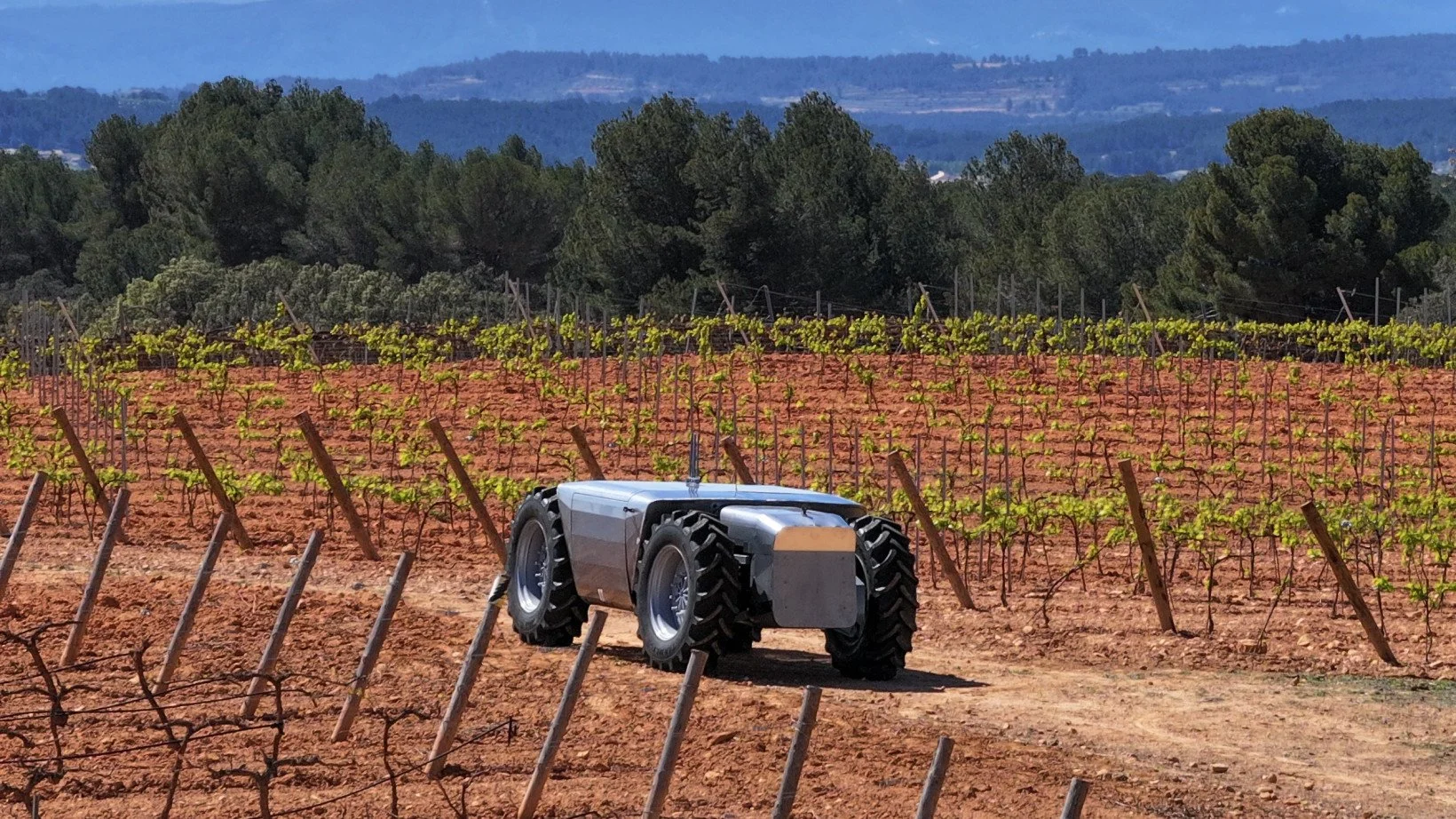Autonomous Tractors: Innovation Meets Reality on the Farm
In the rolling fields of Spain, something quietly revolutionary is underway. Voltrac, a young startup, has developed an electric autonomous tractor engineered with dual use in mind. While its agricultural potential is obvious, the prospect of defence applications shows how ag-tech is increasingly tied to advanced, multi-purpose systems.
The Voltrac machine is no concept sketch. It’s a 3.5-tonne electric tractor capable of carrying up to 4,000 kilograms, travelling at speeds of up to 40 km/h and running for as long as 20 hours on a single charge. Modular attachments - ploughs, mowers, cutters or a flatbed for transport -snap on easily. Swappable batteries stored in the chassis keep downtime to a minimum.
Co-founders Thomas Hubregtsen and Francisco Infante Aguirre bring heavyweight credentials. Hubregtsen worked in artificial intelligence at BMW and Google X. Aguirre is an aerospace engineer with family roots in farm machinery supply. Together they have built a tractor that learns, adapts and can turn its hand to more than one role.
For farmers, that means the potential to fine-tune inputs. Even in early development, the tractor is designed to “experiment” in the field, treating patches differently, observing crop responses and adjusting treatments on subsequent passes. The promise is higher yields, reduced chemical use and more efficient management.
What grabs global attention is the tractor’s dual-use potential. Voltrac has been clear that with small modifications - anti-jamming systems, mine detection, frontline supply roles - the platform could serve in conflict zones. Aguirre points to Ukraine as an example where autonomous machines might save lives: “Many lives are lost in non-combat situations, including frontline resupply missions. That’s where we see a machine like ours making a difference: it’s built for tough terrain, and it doesn’t risk human life.”
For New Zealand farmers and contractors, the technology invites both interest and caution. Autonomous machines promise to ease labour shortages, improve precision and cut emissions with electric drivetrains. A modular platform that swaps between roles has obvious appeal. Voltrac has raised millions in early funding, built its prototype and aims for first deliveries as early as 2026. The pace is fast.
But scepticism is warranted. Farming isn’t done on test tracks. New Zealand’s terrain - from steep hill country to heavy wet soils - is a tougher proving ground than most European farmland. Autonomous tractors may run for 20 hours on flat dry ground, but how will they cope with clay tracks in winter, shifting stock or working on slopes where judgement and caution matter as much as horsepower?
Cost is another hurdle. Electric drivetrains and advanced AI aren’t cheap. Contractors already face tight margins and high capital costs. The idea that a robotic tractor will simply replace a skilled operator is far from straightforward. Farmers may question whether the technology will pay for itself, especially when reliability and local servicing support are untested here.
Regulation also lags. Remote operation or machines running without anyone in the cab raises safety, insurance and liability issues. Until the legal framework is clear, few will hand over key tasks entirely to an algorithm.
And then there’s the human element. Farming is not only about efficiency; it’s about experience and judgement. A seasoned operator can read the weather, hear when a machine sounds off and make on-the-spot calls no software can yet match. Machines may reduce drudgery, but replacing skilled drivers is a long way off.
That doesn’t mean the technology should be ignored. Early adopters here may trial these machines in flat arable systems or controlled environments where logistics or repetitive operations dominate. Contractors might partner with suppliers or universities to test the potential. But it would be unwise to assume a quick road to replacing every driver with a robot.
There’s also the risk of hype. Technology companies often promise breakthroughs that never reach mass adoption. Farming still demands human involvement at every level. The Voltrac platform is exciting, but until it proves itself in real paddocks, under real pressure, the jury remains out.
Where the concept may gain traction sooner is in support roles - moving supplies, hauling loads or working in hazardous environments where the risk to people is high. In those spaces, the value of autonomy is clearer. But when it comes to the delicate, variable and unpredictable realities of farm work, people will remain central for a long time.
Voltrac’s autonomous tractor signals where technology is heading: smarter, more modular, more autonomous. But as we weigh its relevance to New Zealand agriculture, it pays to stay grounded. Machines like this may one day complement farm work, but they won’t quickly or easily replace the skill, adaptability and resilience of the farmers and contractors who keep the country fed.

